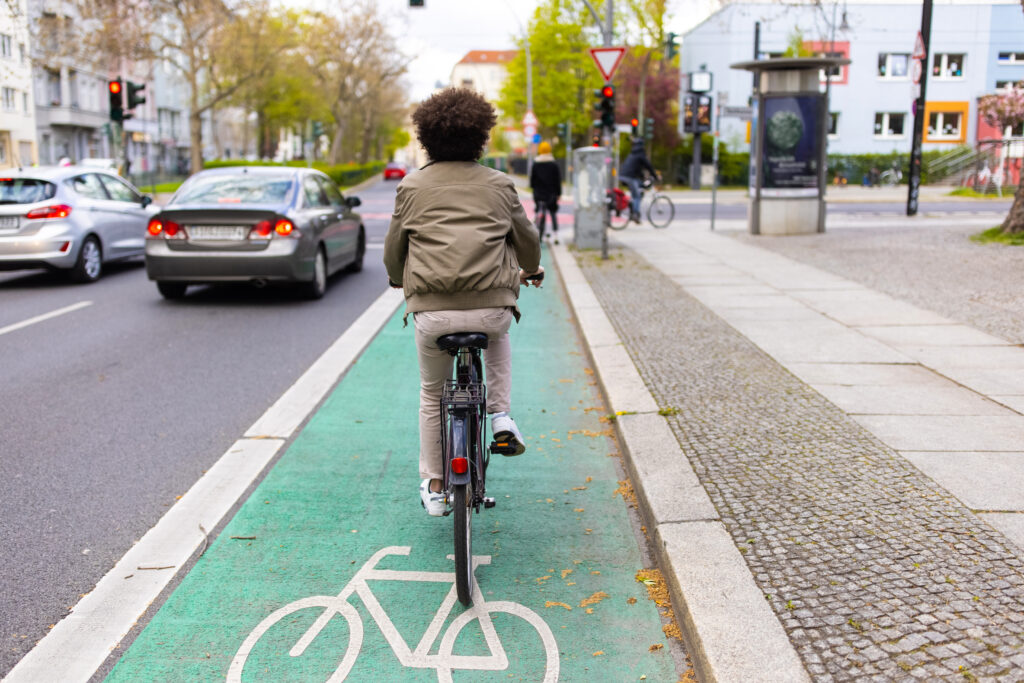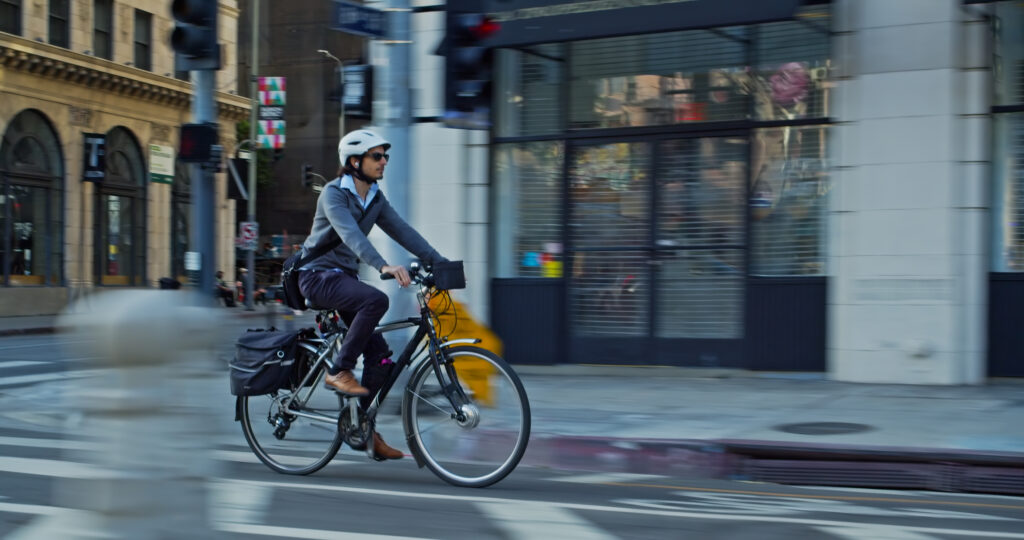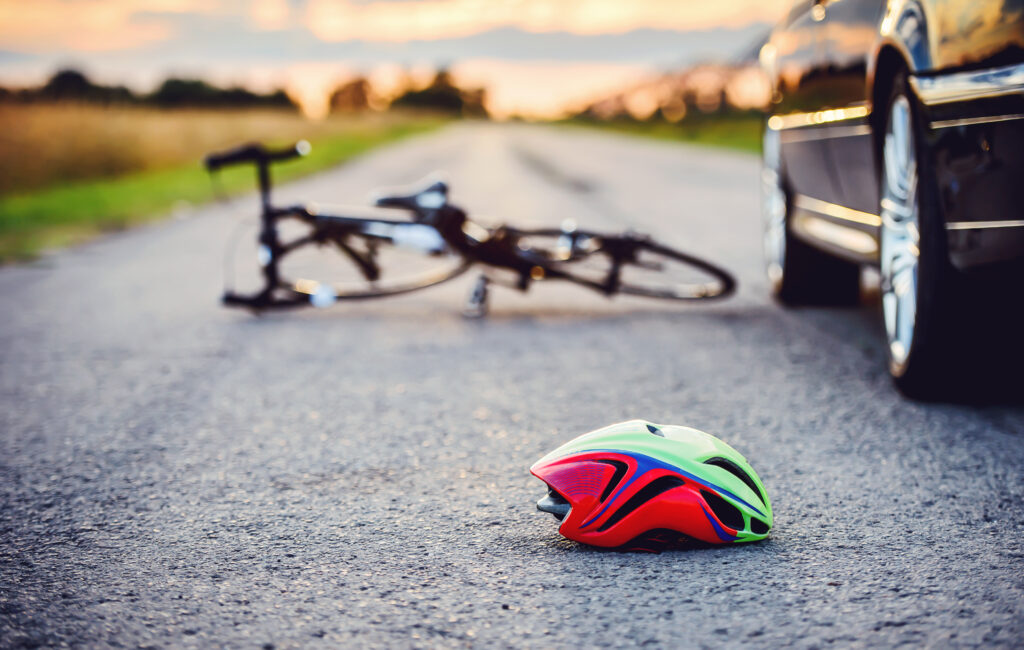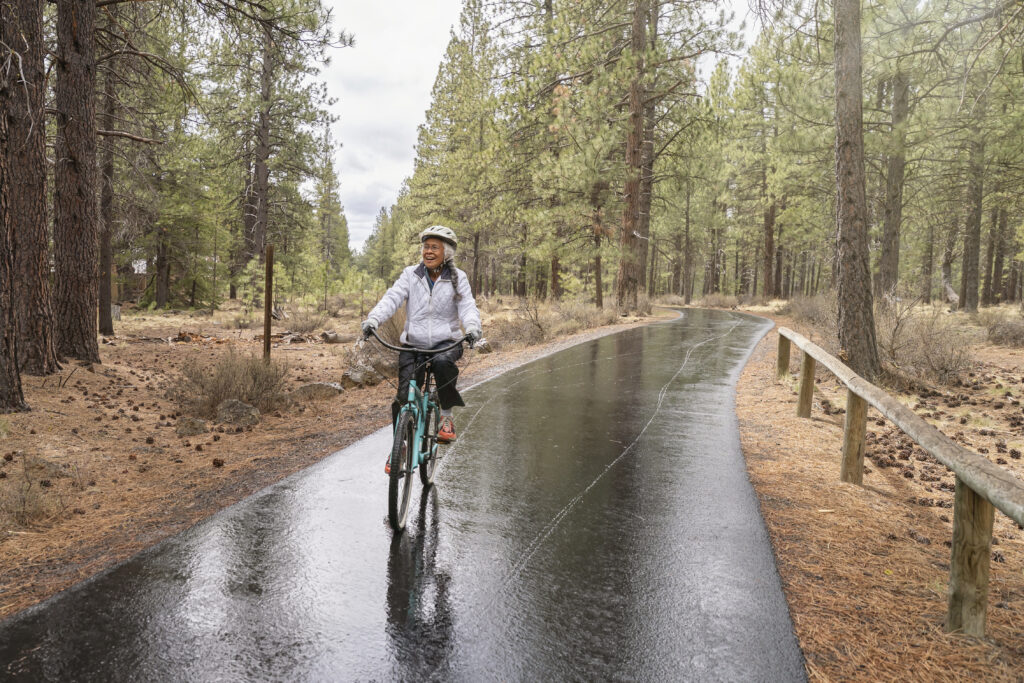Bike Commuting Tips

As the sun rises and the city bustles to life, many individuals are opting for a different kind of commute. Instead of sitting in traffic, they’re strapping on helmets, hopping on their bicycles, and pedaling their way to work. Bicycle commuting is not only a sustainable and eco-friendly option but also a great way to stay active and beat the morning rush. However, switching from four wheels to two can initially seem daunting. That’s why we’ve compiled a list of tips to help you make the most of your bicycle commute and arrive at work feeling energized and ready to take on the day.
Choose the Right Bike for Your Commute
When choosing the right bike for your commute, there are a few things to consider. The first is the distance of your commute. A single-speed or cruiser bike may be sufficient if you have a short commute. However, if you have a longer commute or a lot of hills to tackle, consider a road bike or a hybrid bike with multiple gears. Seek guidance from your local bike shop if you need help choosing the right bike for you.
Another factor to consider is the terrain of your route. If you’ll be riding on smooth pavement or bike paths, a road bike or hybrid bike with narrow tires may be your best bet for speed and efficiency. On the other hand, if you’ll be riding on rough roads or off-road trails, a mountain bike or a hybrid bike with wider tires and sturdier construction may be a better option.
Comfort is also an essential factor to consider. Look for a bike with a comfortable saddle (seat) and handlebars that allow you to sit upright. This will help reduce your back and neck strain and make your ride more enjoyable.
Finally, consider any additional features you may need for your commute. If riding in the dark, ensure your bike has front and rear lights and reflectors to increase your visibility. If you are carrying a lot of gear, consider a bike with a rack or panniers (bags attached to the sides of the bike) to make transportation easier.
Plan to Take More Time Than You Need
While biking to work can be faster than driving in some cases, it’s essential to plan for unexpected delays such as traffic, weather conditions, or even getting lost. Allow extra time for your commute so that you can arrive at work without feeling rushed or stressed. Additionally, taking a few minutes to stretch before and after your ride can help prevent muscle soreness and improve your overall well-being. Remember to pack extra clothes and any necessary tools or equipment, such as a pump, in case of bike malfunctions. By planning ahead, you can ensure a safe and enjoyable bike commute to work.

Invest in Safety Gear and Accessories
Investing in safety gear and accessories is crucial for bicycle commuting. The most critical safety gear is the helmet, which can reduce the risk of head injury in an accident. Look for a helmet that fits properly and is certified by safety standards organizations. Other essential safety gear to consider include reflective clothing or accessories to increase your visibility to other drivers, especially when riding in low-light conditions. Installing lights and reflectors on your bike can also make you more visible to others on the road.
Another helpful accessory to invest in is a bike lock to secure your parked bicycle. Look for a sturdy lock that cannot be easily cut or broken. Additionally, consider getting a water bottle holder or panniers to carry water and other essentials during your commute. A bike computer or phone mount can help track your route or stay connected for longer commutes.
Know The Rules of The Road
Knowing the rules of the road is crucial for a safe and successful bicycle commute. First and foremost, it’s important to follow traffic laws and regulations, such as stopping at red lights and stop signs, using hand signals when turning or changing lanes, and riding with the traffic flow. In many areas, bicycles are considered vehicles and are subject to the same traffic laws as cars and trucks.
In addition to traffic laws, you must be aware of your surroundings and always stay alert. Watch for hazards on the road, such as potholes or debris, as well as other vehicles and pedestrians. Using a bell or horn to signal your presence can also help prevent accidents.
Finally, be respectful and courteous to other road users. Yield to pedestrians, give other vehicles enough space, and avoid weaving in and out of traffic. By following these guidelines and knowing the rules of the road, you can enjoy a safe and stress-free commute on your bicycle.
Map Out a Safe Route to Work
Mapping out a safe route to work is essential for a successful bike commute. Start by researching bike-friendly routes, which may include bike lanes or shared-use paths. Websites such as Google Maps or local bike advocacy groups can provide helpful resources for finding safe and efficient routes.
When planning your route, keep in mind the distance, terrain, and potential hazards, such as busy intersections or steep hills. It may be worth testing different routes during off-peak hours to determine which ones work best for you. Additionally, consider the weather and time of day, as these factors can impact the safety and comfort of your commute.
Remember always to prioritize safety when selecting a route. Choose roads with lower speed limits and less traffic, and be cautious when crossing busy intersections or merging with traffic. You can enjoy a stress-free bike commute to work by mapping out a safe and efficient route.
Make Sure You Are Visible on the Roads
Wearing reflective clothing or accessories, installing lights and reflectors on your bike, and using hand signals to indicate turns and lane changes are all ways to increase your visibility to other drivers. Research has shown that adding lights and reflective clothing to a cyclist can reduce the risk of a collision by up to 47%.
It’s also important to consider the time of day and weather conditions when choosing your safety gear. During low-light hours, reflective clothing and lights become even more crucial. And in rainy or foggy conditions, bright colors can help you stand out against the grey backdrop. By taking these extra steps to make yourself visible on the roads, you can significantly reduce the risk of accidents and make your bicycle commute safer and more enjoyable.
Watch for Cars and Pedestrians

Regarding bicycle commuting, sharing the road with cars and pedestrians is an unavoidable reality. Always remain alert and aware of your surroundings to ensure a safe and enjoyable commute.
While riding, always keep an eye out for vehicles turning or changing lanes, especially at intersections. Use hand signals to indicate your movements and make eye contact with drivers to ensure they see you. Similarly, watch for pedestrians crossing the road and always yield to them.
Remember also to be aware of fellow cyclists on the road. Avoid weaving in and out of traffic or riding too close to others. By staying alert and mindful of others on the road, you can make your bike commute safer and more enjoyable for everyone.
Dress Appropriately for Cycling to Work
Dressing appropriately for your bike commute can significantly improve your comfort and safety on the road. Opt for breathable and moisture-wicking fabrics to stay cool and dry, and wear layers to adjust to changing weather conditions. Choose pants that fit well and won’t get caught in the bike chain, or consider wearing cycling-specific shorts with padded liners for added comfort on longer rides.
In addition to clothing, remember footwear and accessories. Closed-toe shoes with good traction are recommended to keep your feet protected and secure on the pedals. Helmets are also essential for safety; some cities even require them by law. Look for helmets with ventilation to keep your head cool and a secure fit to provide optimal protection.
Dressing appropriately for your bike commute can help you feel more confident and comfortable on the road. With the proper clothing and gear, you can enjoy a safer and more enjoyable ride to work.
Pack Snacks, Water, and Other Essentials For Your Ride
Fueling your body with proper nutrition and hydration is essential for a successful bike commute to work. Be sure to pack snacks, water, and any other essentials you may need along the way.
For longer rides, ensure you have enough fuel to keep your energy levels up. Pack healthy snacks like fruit, nuts, and granola bars to keep you fueled and focused. Hydration is also critical to a successful ride, especially in warmer weather. Bring plenty of water, and consider a hydration pack or water bottle holder for easy access.
In addition to snacks and water, consider packing other essentials such as a small tool kit for any necessary bike repairs, a portable pump, sunscreen, and a poncho for unexpected weather changes. Preparing appropriately and packing the essential items can make your bike commute safer and more enjoyable.
Have a Backup Plan
Having a backup plan is an essential aspect of bike commuting. It’s always a good idea to be prepared for unexpected situations, such as a flat tire, inclement weather, or an injury. One way to have a backup plan is to map out alternative routes to your destination. This can help you avoid traffic and road hazards and give you options if one route becomes blocked.
Another essential part of having a backup plan is carrying a fully charged phone and knowing emergency contact numbers. In case of an accident or emergency, having access to a phone can be a lifesaver. Additionally, knowing where the nearest medical facilities and bike shops are located can be beneficial in case of an injury or bike repair.
Finally, have a contingency plan for days when biking isn’t possible. This could involve having a carpool or public transportation option available or having a flexible work schedule that allows for alternative modes of transportation. Having a backup plan in place can ensure a safe and stress-free commute to work, no matter what may arise.
Pre-ride Your Route
Preriding your route is critical to preparing for a safe and successful bike commute. Before hopping on your bike, check the weather conditions and plan your route accordingly. Take a trial run of the route ahead of time so you can become familiar with it and any potential hazards that may arise.
When pre-riding your route, pay attention to the road conditions and traffic. Avoid busy roads or intersections if you can, and look out for any bumps, potholes, or debris that could pose a hazard while riding. Also, be aware of the bike lane regulations in your area; many cities have designated bike lanes but require riders to use alternate routes when unavailable. Knowing the rules of the road can help you stay safe and make your commute more efficient.

Be Prepared for Inclement Weather or Mechanical Issues
Be prepared for inclement weather or mechanical issues that may arise. Have a plan for what to do if it starts raining or your bike breaks down, and be sure to bring the necessary supplies with you on your ride.
Finally, practice safe riding techniques while pre-riding your route. Pay attention to traffic signals and obey all laws and regulations. Be visible, wear bright clothing when possible, and remember to use your bike lights while riding at night. With the proper preparation and safety measures, you can look forward to a safe and enjoyable bike commute.
Enjoy Your ride!
With a bit of preparation and knowledge of the basics, you can make your bike commute safer and more enjoyable. By packing necessary items, having a backup plan, pre-riding your route, and practicing safe riding techniques, you’ll be on your way to an enjoyable daily ride. So get out there and enjoy the ride!
Chaikin, Sherman, Cammarata, & Siegel, P.C. Advocates For Bicycle Accident Victims
You may be entitled to compensation if injured in a bicycle accident. Our legal team is dedicated to advocating for injured bike commuters and their families who have suffered harm due to someone else’s negligence. Contact Chaikin, Sherman, Cammarata & Siegel for a free consultation today.




